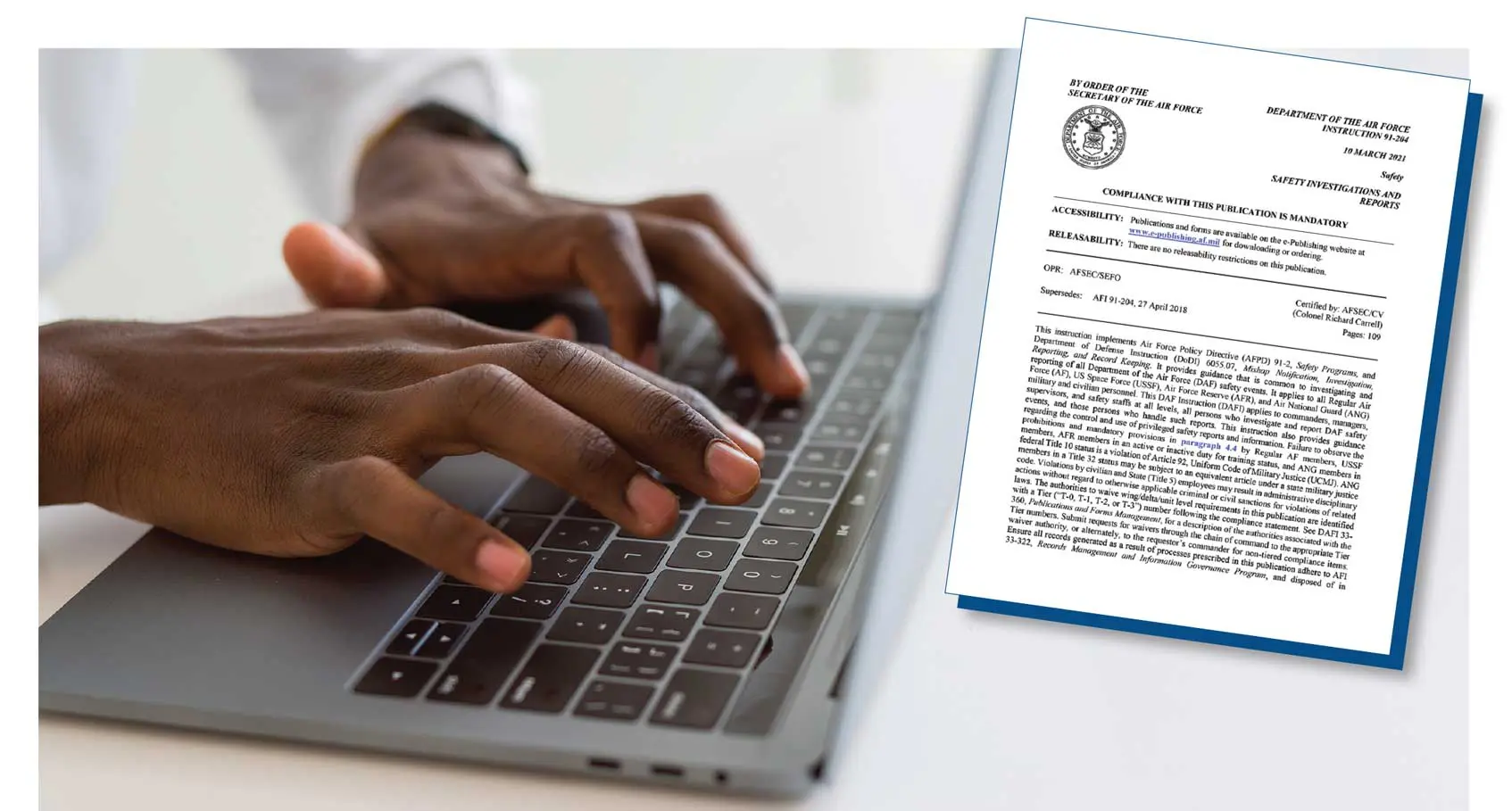Writing the Report
By KEVIN SLUSS, CSP, AMC FLIGHT SAFETY
So, you have finished investigating the event, you have determined what happened and why it happened, and you have ideas for recommendations. Now it is time to write the report. DAFI 91-204, Safety Investigations and Reports, contains over seven pages of requirements (paragraphs 8.5. – 8.10.) to provide support. One error seen frequently is the length of the findings and recommendations. Findings and hazard/deficiency statements must only be one sentence long (8.7.5., 8.7.11, 8.9.20). The hazard/deficiency statement is not a repeat of the associated finding (8.9.20), but rather, simply the hazard that the recommendation addresses. New information should not be introduced at that point in the report (8.7.18.), but should be put into a factor instead. Validate findings with the “Findings Test†(8.7.19; especially, 8.7.19.5.). Is the finding supported by a factor? Good examples can be found in DAFMAN 91-223, Aviation Safety Investigations and Reports, paragraph 7.1.2. Recommendation examples in DAFMAN 91-223 (7. 1.3.) suggest one sentence for recommendations, and should start with a verb, not “Recommend.†Furthermore, you should not reference an action agency since the Office of Primary Responsibility (OPR) does that (DAFI 91-204, paragraph 8.9.18.). All acronyms must be spelled out in each individual recommendation (DAFI 91-204, paragraph 8.9.15.). If you suspect the OPR is an Air Mobility Command agency, as is likely for technical order changes, contact our office (DSN 779-0930, amc.sef@us.af.mil) so we can refer you to the correct subject matter expert (DAFMAN 91-223 paragraph 2.3.9., and DAFI 91-204, paragraph 8.9.19.2.). For more tips, you can pull the Air Force Safety Center Quality Control checklist from the Safety Investigation Board GO package in the Air Force Safety Automated System, Pubs & Refs, QC & MOFE section.

